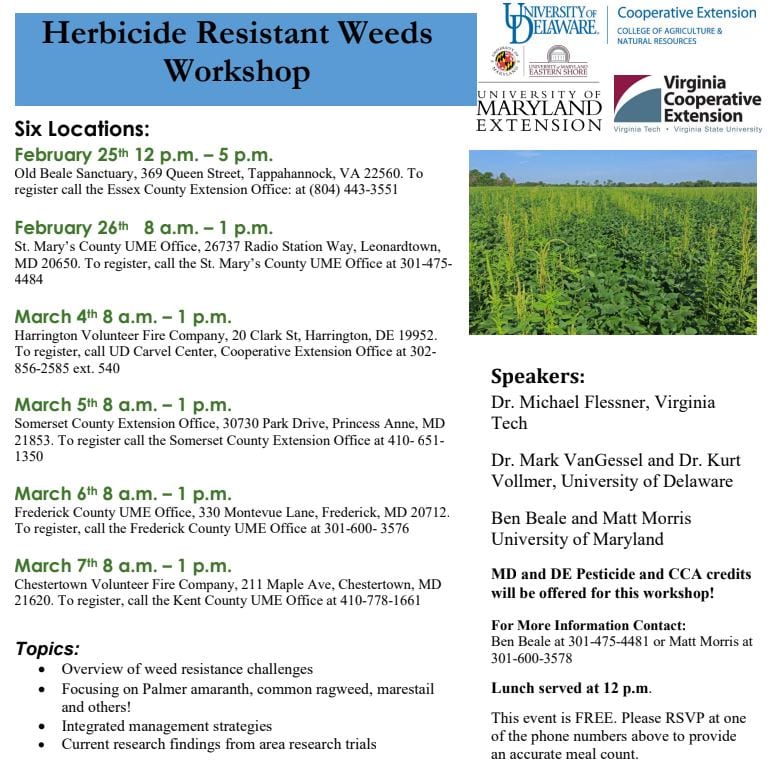Sarah Hirsh, Agriculture Agent
University of Maryland Extension, Somerset County
In the next couple of weeks, common ragweed will begin to emerge (Figure 1). There are herbicide-resistant populations of common ragweed throughout Maryland. In 2019, common ragweed samples from St. Mary’s, Charles, Somerset, Worcester, and Wicomico counties, MD were tested and found to be resistant to glyphosate (group 9) and cloransulam (Firstrate; group 2 “ALS Inhibitors”) herbicides. Furthermore, three-way resistance to glyphosate, Firstrate, and fomesafen (Reflex, group 14 “PPO Inhibitors”) was found for two eastern shore samples from Dorchester Co, MD and Kent Co, DE. Because common ragweed populations can be resistant to glyphosate and other herbicides, pre-planting and residual herbicide control are particularly important.

What steps can you take now against common ragweed?
- Delay cover crop burn down. In addition to providing other agronomic benefits, cover crops may provide competition with spring weeds, including ragweed, and reduce emergence and growth. Growing conditions have been excellent this spring, so terminating a cover crop would leave an open window for weeds to proliferate.
- Plan to apply something other than or in addition to glyphosate at pre-planting burndown. Research trials in 2019 indicated that a herbicide burndown of glyphosate plus Liberty at soybean planting effectively eliminated common ragweed. (Soybean was planted 18 May at one site and 3 June at a second site). The addition of 2,4-D or Banvel is another glyphosate tank mix option, and paraquat or paraquat + metribuzin is another option for smaller ragweed plants.
- Apply a residual herbicide at soybean planting. Research trials in 2019 indicated that it was important to apply a residual herbicide at burndown to control post-planting common ragweed escapes. Applying the residual herbicide at soybean planting provided better common ragweed control than applying the residual herbicide at an earlier (4 April) burndown date. A second research trial comparing residual herbicide products found that Command, Linex, Dimetric, or combinations of Command + Dimetric, and Linex + Dimetric all reduced common ragweed prevalence in soybean.
More information on managing herbicide-resistant common ragweed in Maryland can be found here: https://extension.umd.edu/sites/extension.umd.edu/files/_docs/publications/Ragweed%20FS474.pdf

Common ragweed can quickly get out of hand and dominate a soybean crop (Figure 2). However, with proactive control and scouting, herbicide-resistant common ragweed can be effectively controlled.

